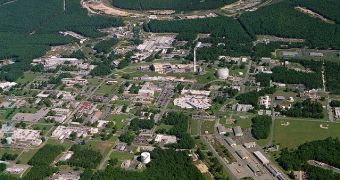Scientists at the US Department of Energy's (DOE) Brookhaven National Laboratory (BNL) have recently observed for the first time the hypothesized confinement of spinons inside condensed matter. The structures are nothing more than particle-like magnetic excitations, which, apparently, can be confined in very much the same way quarks (elementary particles) are confined within individual protons and neutrons, the structures at the core of atomic nuclei. According to BNL experts, the recent discovery may provide them with a new way of exploring quantum chromodynamics.
Quantum chromodynamics is the proposed theory that explains the basics of fundamental quark interactions. The recent finds were made inside a previously well-defined magnetic system, the experts add. The observations themselves were made at the Science and Technology Facilities Council's Rutherford Appleton Laboratory (RAL), in the United Kingdom. An international group of physicists participated in the scientific efforts. The experts also found that a 12-year-old theory, developed by BNL expert Alexei Tsevelik, actually predicted their finds. Details of the new scientific study appear in the November 29 issue of the respected scientific journal Nature Physics.
“The concept of confinement is one of the central ideas in modern physics, being at the core of the theory of nuclear forces. In certain systems, when constituent particles are bound together by an interaction whose strength increases with increasing particle separation, individual particles cannot exist in a free state and therefore can be observed only indirectly,” Tsevelik says. “It has been interesting for us that a similar situation of confinement can be modeled in condensed matter systems. Instead of quarks being confined in protons and neutrons, we have other quantum entities that act just like particles – elementary excitations of magnetic systems called spinons,” he adds.
The scientific paper that the BNL expert, and collaborators, published more than 12 years ago provided the recent investigation effort with the necessary background to describe the magnetic excitation spectrum of such a magnetic system. The new work was funded by the DOE Office of Science, which has the BNL as one of ten national laboratories overseen and primarily funded by the organization. “Now that we have an example of confinement in a condensed matter system, our next step is to check further predictions of the theory to make sure there are no unpleasant surprises,” Tsevelik concludes.

 14 DAY TRIAL //
14 DAY TRIAL //